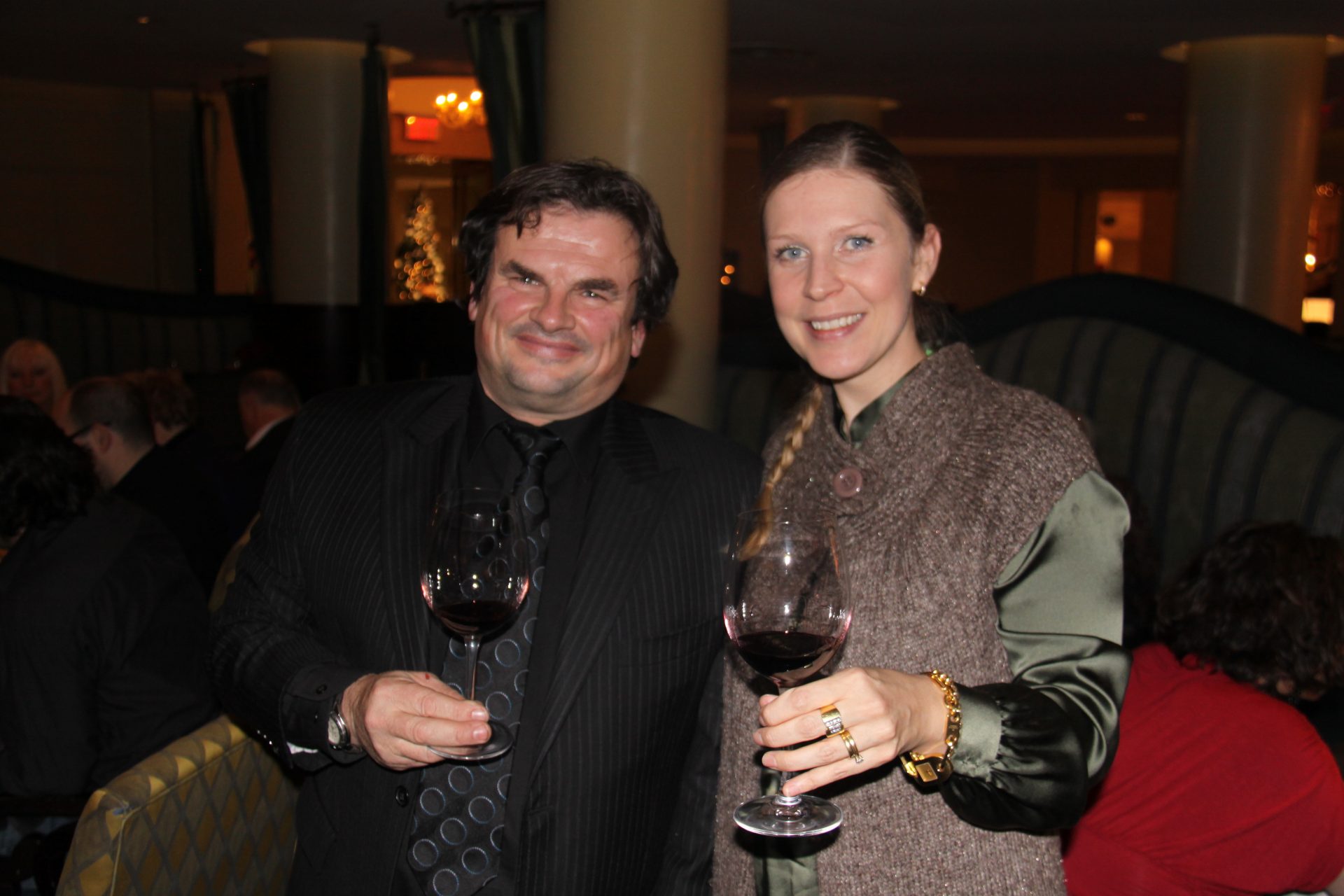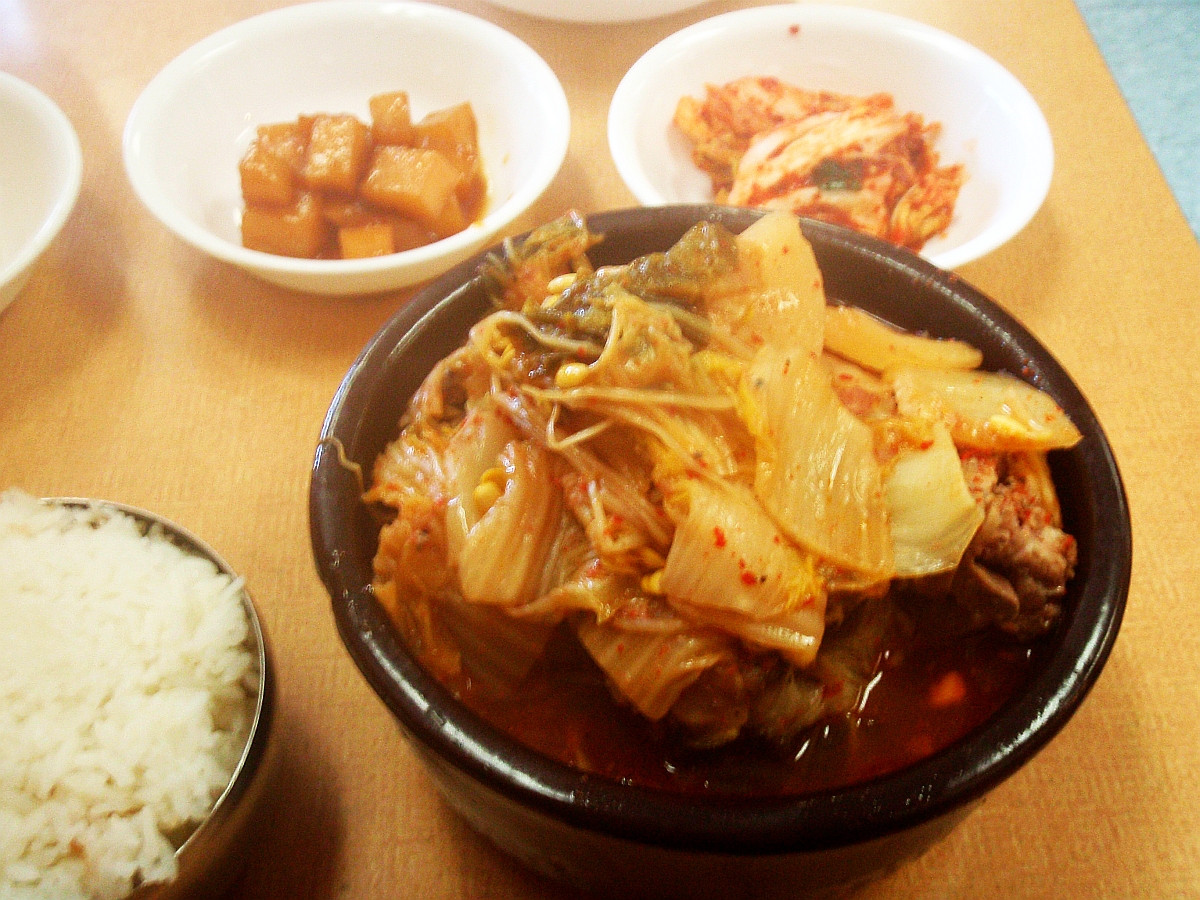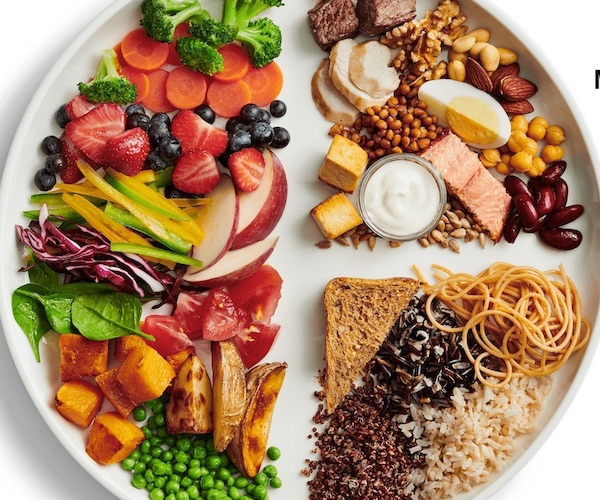
By Marlise Ponzo
A partnership between Groupe Taillan of Bordeaux and Vincor Canada was solidified in 1998 with the mutual goal of creating an ultra premium Canadian wine. This Franco-Canadian team was able to utilise Taillan’s centuries of classic viticultural and Bordelais wine making experience and Vincor’s established reputation as a springboard to create one of Canada’s most epic wines. The joint venture’s aim was to develop vineyards in Canada’s southern Okanagan Valley and a small winery in Oliver dedicated to expressing the magic of the terroir found within the boundaries of the Osoyoos Larose vineyard area.
Nestled next to the majestic Osoyoos Lake on a gently sloping hillside, these four vineyard blocks (32 hectares) benefit from the temperature moderating effect of the lake below. The vineyard also benefits from the protection of the wild sage-covered soaring mountain range running alongside it. The arid climate, soil composition (a mixture of sand, clay, rock and gravel), sun exposure, air circulation, (the list goes on and on) all seem to work in perfect harmony to create one of the Okanagan’s most beloved wines.
Osoyoos Larose’s wine maker and vineyard manager, Pascal Madevon, explains that his decision to re-locate from the Medoc to the Okanagan Valley was made on his first visit with his family when he set eyes on the near perfect state of the grapes growing there. The breathtaking landscape and the spectacular terroir the site had to offer were difficult to resist.

An intimate dinner at Epic restaurant in Toronto’s Royal York Hotel, hosted by Vincor’s Eugene Mlynczyk, and Pascal Madevon himself, helped me to gain more insight into the ambition, foresight and absolute brilliance involved in this venture; from vineyard practices to wine making approach, varietal blending /composition to aging and final release. Over a scrumptious dinner created by chef Tim Palmer, our group consisting of a handful of the city’s wine writers and magazine editors, listened to Pascal speak, completely engrossed by his ability to convey his love and knowledge of the vineyards he manages and his passion and adoration for the wine that he makes.
Using the classic Bordeaux varietals, Merlot, Cabernet Sauvignon, Malbec, Petite Verdot, and Cabernet Franc, Madevon blends these components as a composer of classical music would use his orchestra to create harmonious sound. He demonstrates to our group what each individual varietal brings to the final blend with a component tasting of the single varietal wines (2009 vintage). He uses the Merlot for foundation and tannic structure and the Cabernet Franc for volume, texture and solidity (I have to admit, even though I sometimes have difficulty with this varietal – best Cab Franc ever!). The Malbec brings aromatics to the blend when added in small quantities. Petit Verdot is introduced for floral aspect as well as tannin and lastly the Cabernet Sauvignon for centre volume and finesse. With his component wines, Pascal is like a master chef, armed with spice rack, herbs and palate of extreme sensitivity. Never before has it been so clearly demonstrated – become so apparent – the absolute artistry of wine making.

Osoyoos Larose Tasting Notes 2004-2007
2004 Osoyoos Larose Le Grande Vin Okanagan Valley British Columbia
Drinking beautifully now, this wine has evolved elegantly. Notes of earth, game and fresh tan give way to raspberry fruit and spicy woodnotes. Integrated tannins – lengthy finish of leather, licorice and musky herbs. This wine has a lot of finesse.
2005 Osoyoos Larose Le Grand Vin Okanagan Valley British Columbia
Brambly currant fruit and roasted beet, light minted bell peppers, coffee and cedar. Very deep, brooding, sensual aromas. Fine chalky tannins. Voluptuous wine. Lengthy finish – notes of leather and licorice linger.
2006 Osoyoos Larose Le Grand Vin Okanagan Valley British Columbia
Current release – LCBO – $44.95.
Huge mouth filling wine. Generous in aroma and broad on the palate. Again, bold herbaceous currants and wild brush – myrtle – musky sage – haunting bouquet. Hints of sweet chestnut and beet. Still grippy, plentiful tannin. Long cedary, muscley finish. Love this!
2007 Osoyoos Larose Le Grand Vin Okanagan Valley British Columbia
Youthful. Huge grippy, tannic age-worthy wine. Loaded with sweet vanilla bean, cassis and chocolate. Plummy pipe tobacco – yum. Still a baby – very excited to see how this wine develops with age – enough fruit and structure to lay down for quite a long nap.

Marlise Ponzo Interviews Winemaker Pascal Madevon of Osoyoos Larose
Marlise Ponzo: How were you first introduced to the Okanagan Valley in terms of viticulture?
Pascal Madevon: -Arriving in 2001 here, it was my first time in North America and I received a position from Groupe Taillan-they said Pascal do you want to make wine in Canada and I said ‘yes’. I came for the first time here in 2001, to Osoyoos Larose. The vineyards were planted in 1999, 2000 and 2001. In fact my first vintage was 2001.
MP: What were your first impressions of the region and its potential for making world-class wine?
PM: When I arrived in this region for the first time in September…when I opened the gate and saw the grapes on the vine for the first time…they were just great, and I said ‘wow’, incredible terroir. The way I felt-the potential was incredible.
MP: Can you tell me a little about the specific microclimate of the vineyard? What makes it so ideal for viticulture?
PM: We are on the west side of the valley, and the climate is perfect because first it is a hot climate during the growing season, very dry, I mean no disease. Also, we have the lake and the lake gives us, during the night, some heat. That is very good especially for the cabernet sauvignon. The cab sauvignon are close to the lake for us. And it’s important. But the most important are the mountains along the vineyard and at the end of the day, these mountains create a shadow and the shadow decreases the temperature of the vineyard. And that is incredible for the grapes; for example, merlot loves it when there is hot weather and cool weather in the same day. That is the best weather to create very good merlot. I think this part of the valley; especially this side of the valley is probably the best to make great merlot.
MP: How do the Bordeaux varietals express themselves differently in this specific terroir opposed to how they express themselves in Bordeaux? What nuances set Bordeaux and Okanagan wines apart… generally speaking of course?
PM: I think that is a good question because I always try to figure out if there is a difference. I think there is some difference. Some difference, but not so obvious. I think the first thing is the terroir makes a difference. I mean there is more difference in Bordeaux from Merlot coming from a very great estate and a location with not very good terroir for example or medium terroir. I think there are more differences between both of them than for example between Osoyoos Larose and a great Bordeaux estate. First it’s the quality of the terroir and I think that the quality of the terroir at our place is very good. When I bring samples of our wine to France, and I compare them with wine from a very good estate in Bordeaux, we are surprised how they are similar. They are a little different…each one’s different. They are in the same level – that’s a surprise. But the most surprise was the difference we get after only ten years – incredible maturity, incredible wine and that is the biggest one. In the valley, we can get very, very fast, very quickly, a high quality and sometimes in Bordeaux we need to wait a little bit more. I think that is incredible. We apply Bordeaux style but most important-this is Okanagan wine. In our group, Groupe Taillan, there are estates in Saint Emilion, in Pauillac, in Margaux and…Okanagan Valley. Very important for us. It’s just Bordeaux style, but it is not a Bordeaux wine. It’s Okanagan wine.
MP: You stated at the Epic dinner that you only hire people for your team who really have a deep love of wine and that there is no separation between vineyard staff and winery staff. You seem to have a very holistic approach to the creation of Osoyoos Larose. Does this approach insure that the workers have ultimate respect for the final product…. A kind of insurance of meticulous and quality work?
PM: Yes, it’s very important. We make the wine. Terroir is first and the soil and it’s the climate, but also it’s the experience of the people. Never forget the people. When for example in Burgundy, when we talk about Terroir, or in Bordeaux we include also the people…the experience of the people. And all people are very important. And very important also, they are involved in the vineyard and the winery. My people are always involved in both. And never is there a separation between the two…the two sides and we need a lot of people. In a higher end restaurant for example-if you need a very high service-you want to get the top- you need a lot of people. It’ s the same in the vineyard-if you want to have a very high quality you need a lot of people and this affects the price. It’s important to understand that in the vineyard you have a very short time to do operations. Things need to be done at the right time. All our work is by hand-we need people to do the right job at the right time. I have approximately forty people during the growing season in my vineyard. The terroir is important but also the work in the vineyard is very important.
MP: You had mentioned that you encourage them to taste the wine, to understand the final product as well.
PM: For example, during the vinification, I encourage all my people to put all the glasses on the counter and they are totally free to taste during the day for instance if there is something wrong-and also if I have a decision to make, always I asked my workers what they think about my decision.
MP: Can you explain to me any interesting particulars about your winemaking process? Are you taking any steps towards organic/biodynamic practices?
PM: We are trying now to be more and more organic. We are in the process and that is very important for us. It’s important first for the people working in the vineyard because they are the most exposed to this type of product. And it is very important for the customer. We use now for powdery mildew, just sulphur. Next year we move totally organic. We use now, to remove the weeds under the vines, just the tiger and we have that on the tractor and it’s very efficient. No more weed killer.
MP: How has Le Grand Vin been received by wine critics of the new world and old?
PM: After only 10 years-what a big surprise…how the people-the journalists love the wine. We have established with the journalists-the media-a very good connection and the great connection I think is because of the truth. This is not a marketing wine-at first it is about the winemaking/the vineyard-the most important is what is inside the bottle and also the duration. The truth of the project of Osoyoos Larose is the fact that we focus on the terroir-focus on wine that is good. The reception is very good now in Canada but also it is very good in France. We get some articles in France-very good ones.
MP: What are your personal short-term goals… your hopes and dreams for the next few vintages at Osoyoos Larose?
PM: To continue to increase the quality of the wine. I think this year we increased the quality because of the age of the vineyard. To continue moving more and more to being organic…this will be a goal and also in the future to have a winery onsite but we don’t know when…that is a possibility. To continue to have this great wine-that’s very important-quality…particularly that the wine is fantastic!

Marlise Ponzo is a Sommelier, Writer, Educator and Consultant based in Toronto. Her Sommelier service, Crushing On Wine, focuses on hosting wine centered events in the private residences and offices of its clients. Crushing On Wine also offers wine list consulting and staff training for restaurateurs who understand the value of a knowledgeable front of house staff.
Photo: Emma McIntyre







